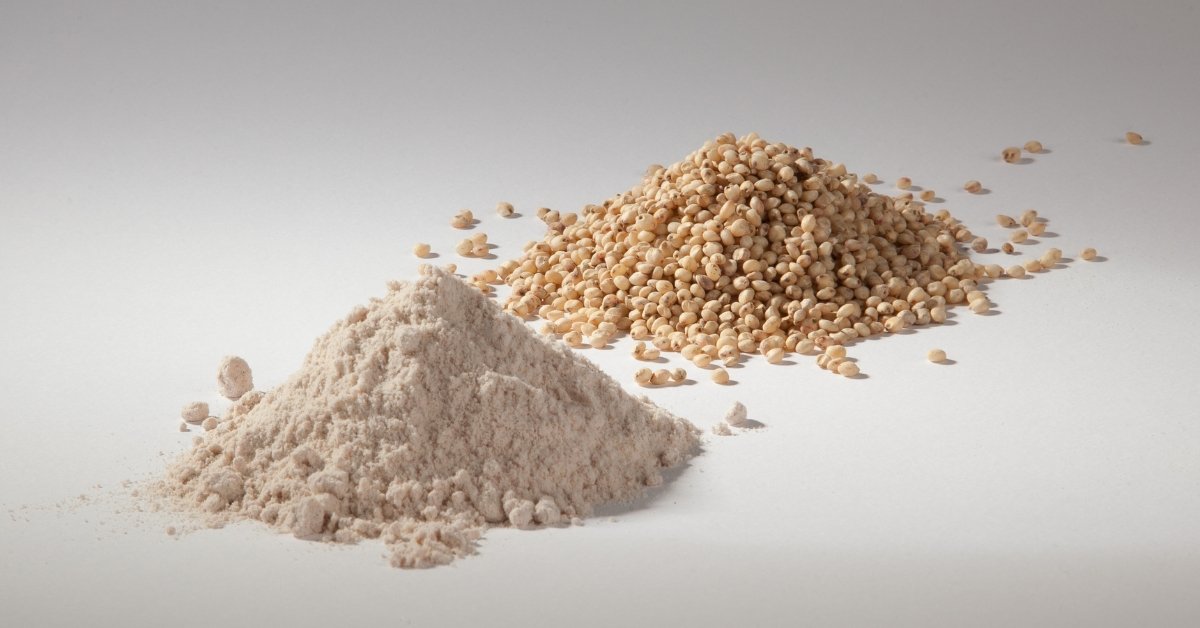Explore top sorghum substitutes like millet and almond flour for gluten-free, nutritious baking recipes.
Table of Contents
When it comes to gluten-free baking, sorghum flour is often a staple ingredient. Its light texture, mild taste, and nutritional benefits make it a favourite among health-conscious bakers.
However, finding sorghum flour can sometimes be a challenge.
Fear not!
Whether you have run out or cannot find it, plenty of substitutes can take your baking to the next level.
What is Sorghum Flour?
Sorghum flour is derived from the sorghum grain, a cousin of millet, known for its versatility in gluten-free baking. Its appeal lies in its gluten-free nature and rich nutrient profile, including fibre, protein, and essential minerals. Whether making bread, cookies, cakes, or pizza dough, sorghum flour can provide a healthy and tasty base for your creations.
Top 13 Sorghum Flour Substitutes
Finding the suitable substitute for sorghum flour depends on the texture and flavour you aim for in your baking. Here is a list of the top 13 substitutes, each with its unique qualities:
Millet Flour
- Texture and Flavor: Mild, slightly sweet; light crumb
- Nutritional Benefits: High in magnesium, potassium, zinc
- Substitution Ratio: 1:1, with the potential addition of binders
Amaranth Flour
- Texture and Flavor: Nutty; denser than sorghum
- Nutritional Benefits: High protein, calcium, iron
- Substitution Ratio: Start with half the amount and adjust
Coconut Flour
- Texture and Flavor: Absorbent, requiring more liquid
- Nutritional Benefits: High in fibre, protein, and healthy fats
- Substitution Ratio: 1/4 cup for every 1 cup of sorghum flour
Buckwheat Flour
- Texture and Flavor: Earthy, robust; denser products
- Nutritional Benefits: Rich in protein, fibre, and minerals
- Substitution Ratio: 1:1, adjusting for taste and moisture
Rice Flour
- Texture and Flavor: Versatile; can be gritty if not fine
- Nutritional Benefits: Good for pastries and sauces
- Substitution Ratio: 1:1, with adjustments for absorbency
Potato Flour
- Texture and Flavor: Heavier density; earthy flavor
- Nutritional Benefits: Rich in fibre, vitamin C, potassium
- Substitution Ratio: 3/4 cup for every 1 cup of sorghum flour
Almond Flour
- Texture and Flavor: Moist, rich; requires more binders
- Nutritional Benefits: High in protein, healthy fats, fibre
- Substitution Ratio: 1:1, adjusting for structure
Oat Flour
- Texture and Flavor: Chewy, moist, slightly sweet
- Nutritional Benefits: Soluble fibre beneficial for heart health
- Substitution Ratio: 1:1, with slight adjustments for density
Chickpea Flour
- Texture and Flavor: Dense, with a rich, earthy taste
- Nutritional Benefits: High protein and binding properties
- Substitution Ratio: 1:1, with potential reduction
Quinoa Flour
- Texture and Flavor: Nutty, slightly earthy
- Nutritional Benefits: Complete protein profile
- Substitution Ratio: 1:1, with adjustments for texture
Arrowroot Flour
- Texture and Flavor: Light, seamless blend with other flours
- Nutritional Benefits: Thickening agent for clear glazes
- Substitution Ratio: 1:1, with possible adjustments
Tapioca Flour
- Texture and Flavor: Light texture; neutral flavour
- Nutritional Benefits: Binding properties; chewy texture
- Substitution Ratio: Direct substitute, mix for finer texture
Corn Starch
- Texture and Flavor: Fine texture; neutral taste
- Nutritional Benefits: Thickening power; glossy finish
- Substitution Ratio: Used in combination for texture improvement
How to Choose the Best Sorghum Flour Substitute
Selecting the right substitute involves considering several factors:
- Desired Texture: Some substitutes offer a lighter consistency, while others add moisture.
- End Use: For binding and elasticity, opt for xanthan or guar gum; for thickening, cornstarch is ideal.
- Allergies: Be mindful of dietary restrictions, such as nut or grain sensitivities.
- Flavor Preference: Some substitutes, like coconut flour, have a distinct taste that may influence your recipe.
- Experiment with Blends: A mix of gluten-free flours often yields the closest match to sorghum flour’s properties.
Tips for Perfect Substitution
To ensure success when substituting sorghum flour:
- Measure Accurately: Use a kitchen scale for precision.
- Start Small: Begin with less and adjust as needed.
- Consider Moisture: Adjust wet ingredients based on the substitute’s absorbency.
- Mix Thoroughly: Ensure even distribution to avoid textural inconsistencies.
- Test and Tweak: Be prepared to experiment to perfect your recipe.
Whether you are out of sorghum flour or just looking to try something new, these substitutes offer a range of options to keep your baking delicious and nutritious.



